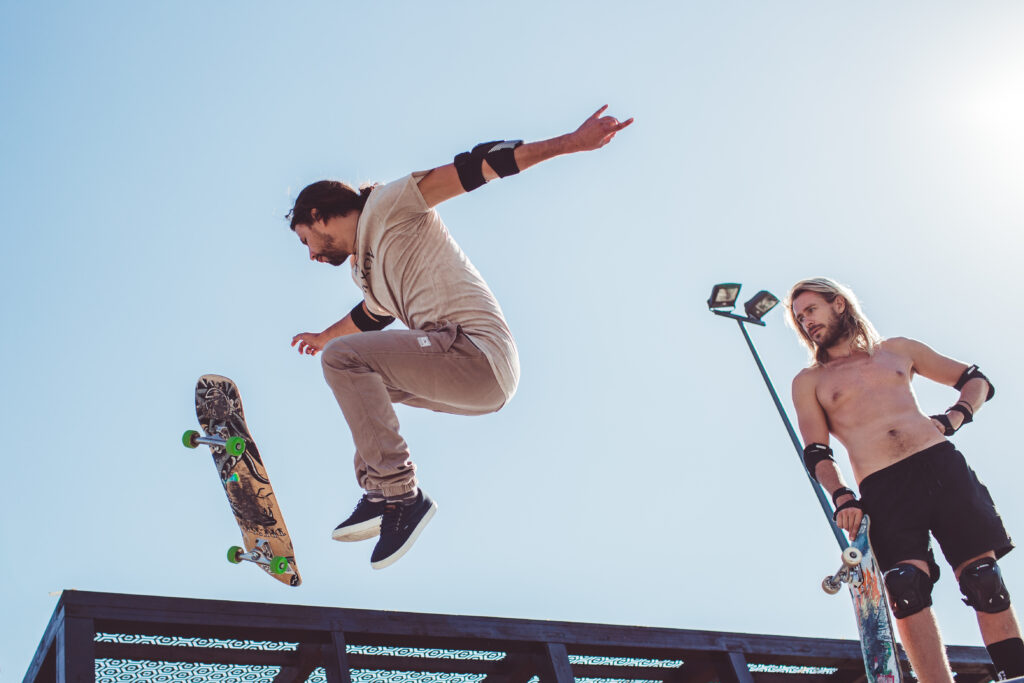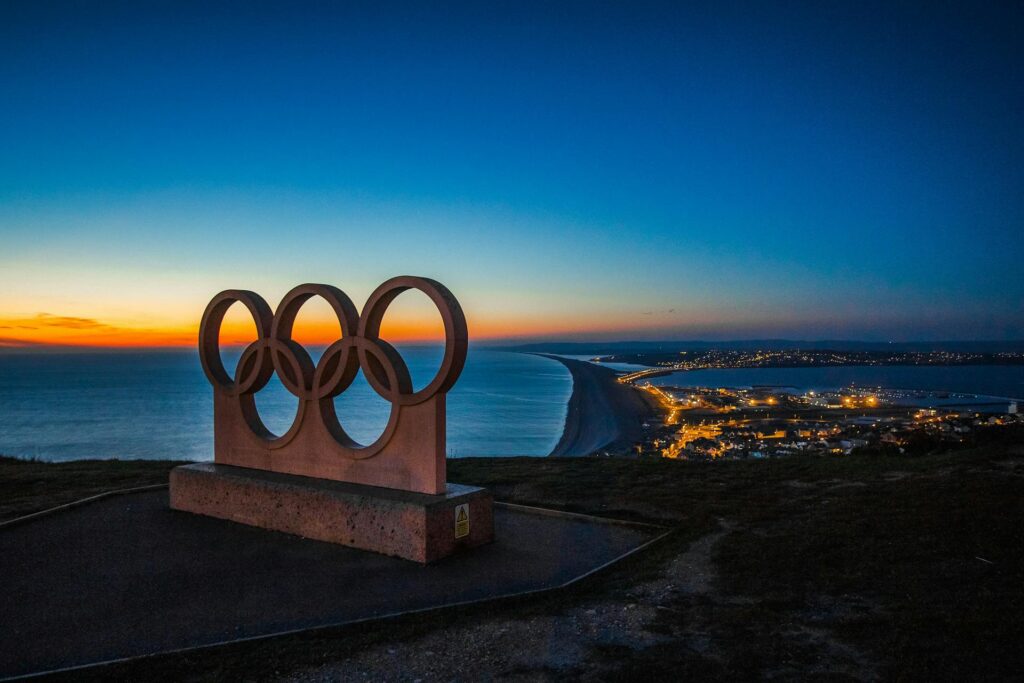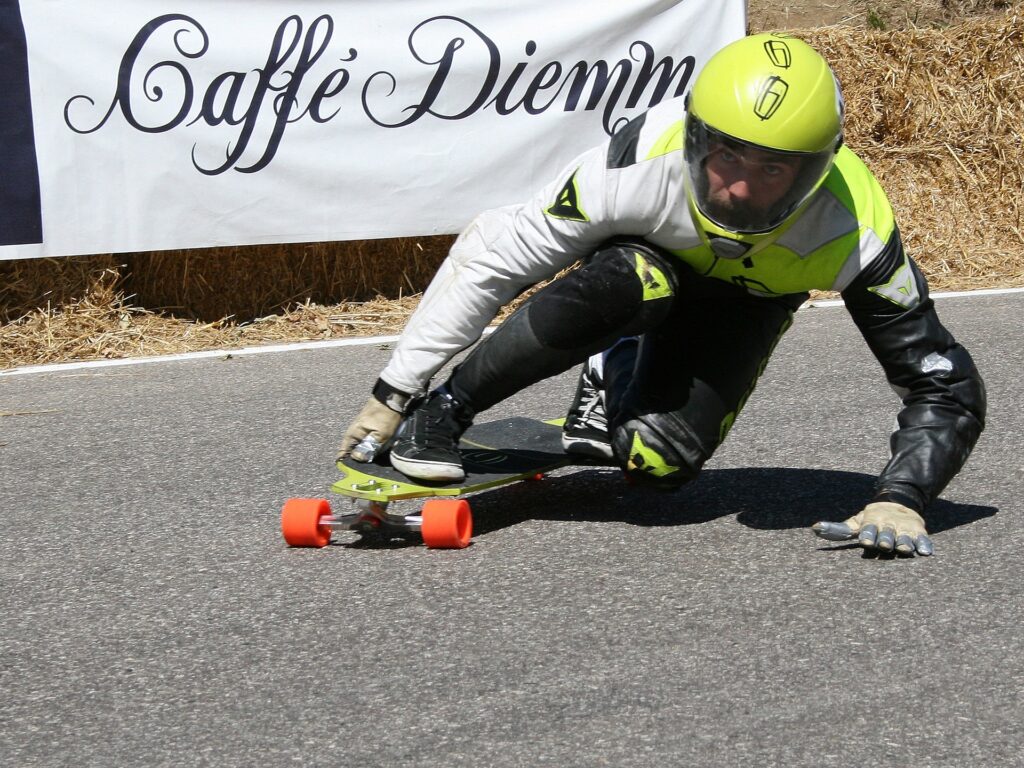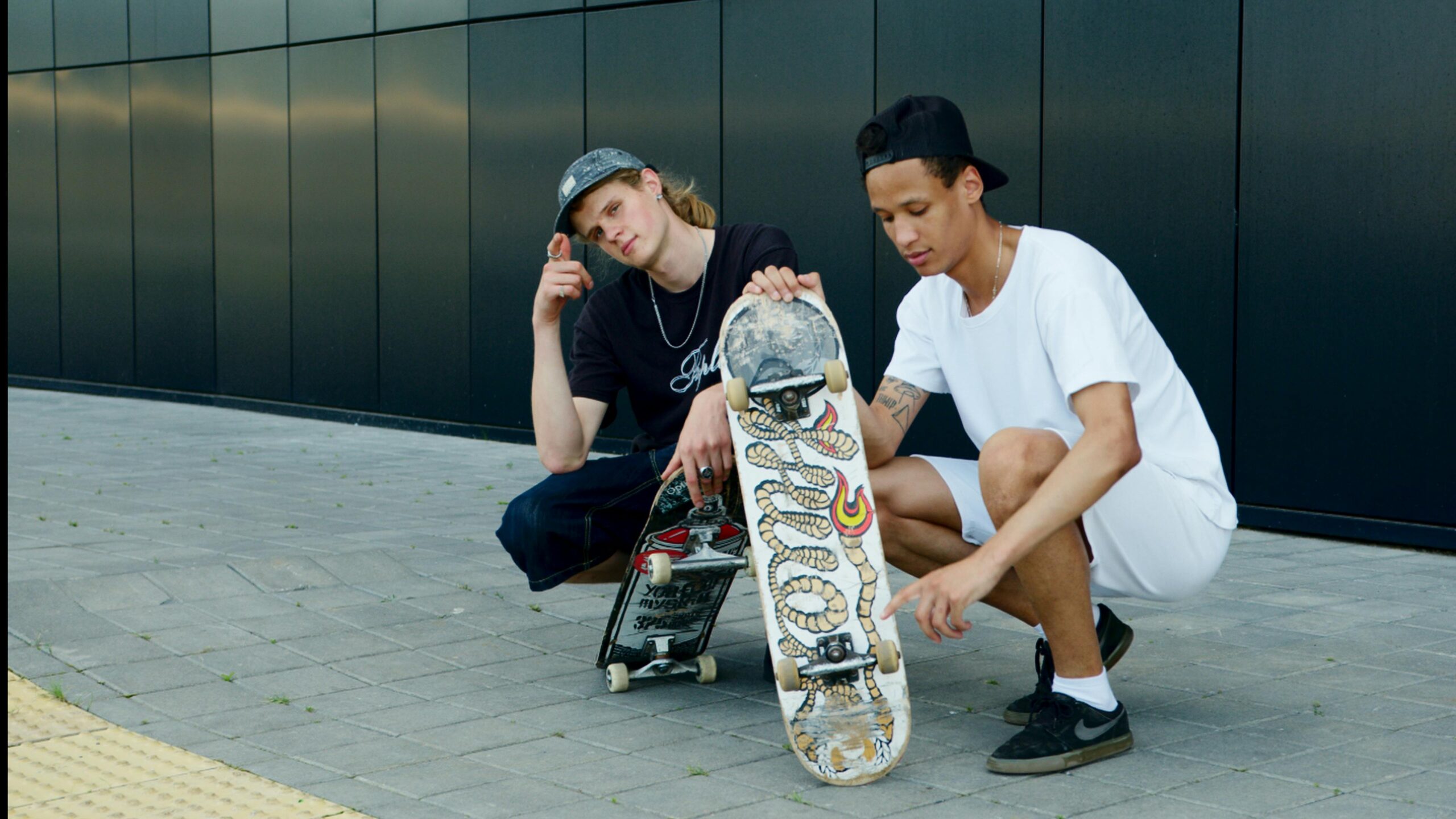Did you know that skateboarding, once considered a rogue sport, is now being played in the Olympics? From the niche of riders to the Olympic stage, this extreme sport has traveled a long way. Skateboarding in olympics is a strange mix of art, sport, and culture. It has not only become a popular activity, but has also made its way into the Olympics, which reflects its worldwide appeal and athletic skills. In this article we will talk about the interesting history of skateboarding, its cultural impact, and the journey to the Olympics. We’ll also talk about the challenges of skateboarders, the technical aspects of the sport, and the future impact that skateboarding will have on the world stage.

A Rebellious Past:
Skate boarding’s roots can be traced back to the 1950s and 1960s when surfers started using wooden planks with roller skate wheels to ride on the streets and sidewalks. This early form of skateboarding was rough and dangerous, but it quickly gained popularity among young people who were drawn to its rebellious spirit.
The Rise of Skate Culture:
As skateboarding evolved, so did its culture. Skate parks were built, competitions were organized, and skateboarding magazines and videos
emerged. Skateboarding became a way of life for many, influencing fashion, music, and art.
The Olympic Dream:
Despite its rebellious image, skateboarding has always been an athletic pursuit. Skateboarders have incredible skill, balance, and coordination. In recent years, the International Olympic Committee recognized skate boarding’s potential and included it in the Olympic Games. This decision marked a significant milestone for the sport and its athletes.
The Future of Skateboarding:
With its inclusion in the Olympics, skateboarding is poised to reach new heights. More people are likely to take up
the sport, and we can expect to see even more innovative tricks and competitions. Skate boarding’s future is bright, and it will continue to inspire and amaze for generations to come.

Early Days of Skateboarding
Origin:
Skateboarding originated in Southern California in the early 1950s. Surfers, when they could not surf in waves, started skating on the streets and sidewalks by attaching roller skate wheels to pieces of paint. These early skateboards were very simple and risky, but they lit a spark that made the sport a global phenomenon.
Early boards were made from leftover wood and some old roller skate wheels. Beginner skaters skate on the streets and sidewalks and do simple tricks like turning and stopping. As the sport grew in popularity, manufacturers began making advanced skateboards with better designs and materials.
The Skateboarding Rise:
The 1970s were the golden era for skateboarding. As the popularity of the sport increased, skate parks started being built in every city and town. These dedicated spaces give skaters a safe and controlled environment to hone their skills. Iconic skate parks like California’s Dogtown fueled the skateboarding revolution.
Skateboarding competitions became very popular, attracting huge crowds and media attention. The skaters honed their skills, developed innovative tricks and styles. The influence of skateboarding was not limited to just sport, it also influenced fashion, music and art. Skateboarding then became a badge of the youth’s rebellion and individuality.
Key figures like Tony Alva, Stacy Peralta, and Alan Gelfand were pioneers of the sport, who inspired countless young skaters. His daring maneuvers and stylish approach to skateboarding captivated the audiences and took the sport to new heights.
The Decline and Revival of Skateboarding:
The popularity of skateboarding began to decline in the late 1970s. Public interest decreased, skate parks and bands disappeared, and media coverage also decreased. But it had a major revival in the early 1980s. Better equipment, influential movies, and iconic skaters like Tony Hawk and Rodney Mullen revived the sport. Street skating, which used urban environments as skate parks, began to gain popularity. This shift toward street skating emphasized individuality, creativity, and a rebellious spirit, which resonated with young people. The cultural impact of skateboarding was not limited to just sport, it also influenced fashion, music and art. It soon became a youth culture symbol of rebellion.
Skate boarding’s Cultural Impact
Subculture and Youth Culture:
Skateboarding has always been associated with counterculture and youth rebellion. Skaters often challenge societal norms and embrace individuality. Skateboarding culture has its own unique language, fashion and music preferences, which differentiate it from mainstream culture.
Music and Art:
Skateboarding has had a significant impact on music and art. Many bands and artists have been inspired by skateboarding culture, and have incorporated its rebellious spirit and energy into their work. Skateboarding has also influenced fashion, with brands like Vans and Converse becoming synonymous with the sport.
Film and Media:
Skateboarding has been featured in many films and TV shows, whether as the central theme or backdrop. Movies like “Thrashin'” and “The Search for Animal Chin” have captured the excitement and rebellious nature of skateboarding. Video games have also incorporated skateboarding elements, allowing players to virtually experience the thrill of the sport.
Journey to Olympics
Professionalization:
In the 1990s and 2000s, skateboarding underwent a significant transformation, evolving from a niche subculture to a professional sport. The establishment of professional skateboarding tours such as the World Skateboarding Tour gave talented skaters a platform to compete at the highest level. The rise of iconic figures like Tony Hawk and Rodney Mullen has further popularized the sport and attracted corporate sponsorships.
The Olympic Movement’s Interest:
The International Olympic Committee (IOC) recognized skate boarding’s growing popularity, its global appeal, and its potential to attract a younger audience. Sport’s dynamic nature, athleticism, and creative expression align with the Olympic values of excellence, friendship, and respect. Additionally, skate boarding’s connection to urban culture and youth culture made it an attractive addition to the Olympic program.
The Tokyo 2020 Games:
Skateboarding made its highly anticipated Olympic debut at the Tokyo 2020 Games. This event showcased the world’s best skateboarders competing in park and street disciplines. Competitions are characterized by thrilling tricks, high-flying maneuvers, and intense competition. The inclusion of skateboarding in the Olympics was a significant milestone for the sport and its athletes, taking its status to new heights.

Future of Olympic Skateboarding
Potential for Growth:
The inclusion of skateboarding in the Olympics has propelled the sport to new heights. With increased exposure and media coverage, skateboarding is poised to attract a wider audience, especially among younger generations. As the sport continues to evolve, we can expect to see more innovative tricks, daring maneuvers and exciting competitions.
Challenges and Opportunities:
The Olympic stage provides a platform for elite skateboarders to showcase their talents, but it also presents challenges. The pressure to perform at the highest level can be immense, and injuries are a constant risk. But, the Olympic spotlight can also create opportunities for athletes to secure lucrative sponsorships and endorsements.
Impact on Skateboarding Culture:
Olympic skateboarding has had a significant impact on skateboarding culture. It has legitimized the sport and elevated its status to the level of traditional Olympic disciplines. Some may argue that the Olympics may have diluted the rebellious spirit of skateboarding, but it has undoubtedly brought the sport to a wider audience and inspired a new generation of skaters.
Conclusion
Skateboarding, once a rebellious subculture, has now become a global phenomenon. From its humble beginnings in the 1950s to its Olympic debut in 2020, olympic skateboarding has captured the hearts and minds of millions. Its influence on popular culture, music, art and fashion is undeniable. As the sport grows and continues to evolve, it will undoubtedly inspire future generations of skaters. So, whether you’re a seasoned pro or a curious beginner, there’s no better time than now to experience the thrill of skateboarding. Lace up your shoes, grab a board, and experience the freedom and creativity of this incredible sport.


